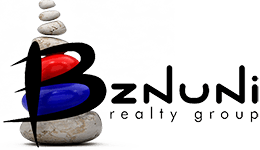
In recent years, cash has dominated U.S. real estate purchases by foreign nationals. According to NAR’s 2013 Profile of International Home Buying Activity, agents reported that 63 percent of their international transactions were conducted without financing.
Is that because foreign buyers prefer a cash purchase, or do they feel locked out of the U.S. mortgage market? If the latter, agents may be able to help more global buyers reach the closing table by identifying lenders ready and willing to meet their buyers’ needs.
This issue of Global Perspectives looks at the foreign national mortgage market for U.S. properties from an agent’s point of view. It turns out there are lenders and products that meet many different needs, and more are on the way. They are not, however, always easy to find.
Credit history has been a big hurdle for foreign nationals who want to finance a U.S. home but do not have a borrowing record in the states. Depending on the buyer’s situation and resources, this is less of a problem today than in the past. Lenders are now able to work around the absence of a credit history and scores.
Read on to learn more about lending programs for overseas buyers and ways to find the right mortgage for your foreign clients.
Where to find lending programs
Typically, foreign nationals do not fit the underwriting requirements of retail banks. There are, however, three major types of institutions serving the foreign national mortgage market: local-level lenders, wholesale lenders that operate regionally or nationally, and international banks with a global reach. A closer look at each:
Lender #1: Community banks and credit unions
Chartered to lend in specific geographic areas, community banks and credit unions focus on local businesses and residents. Community banks are a good place to look for conventional and FHA-backed mortgages. In terms of residential loans, credit unions tend to be less active in the secondary market and more likely to service their own mortgage portfolio. If their market includes areas with large immigrant populations, community banks and credit unions may have lending programs designed to service this group.
Areas where you might expect to find lending relationships in immigrant communities are Boston and its suburbs, the New York City/Newark MSA, parts of south Florida, Chicago and large cities on the west coast. In some cases, these lenders have multicultural outreach programs to educate newly arrived immigrants on consumer finance. Here you will find conventional, conforming and jumbo mortgages, depending on the needs of the buyers.
Lender #2: Wholesale lenders
A handful of wholesale lenders are originating loans specifically for the foreign national market. Working through mortgage brokers who are on the front lines with consumers, wholesale lenders cover a broad spectrum in size and scope, with some originating U.S. mortgages in all 50 states while others operate on a smaller regional basis. Some wholesale lenders offer financing on 1- to 4-unit income properties and jumbo loans are easy to find. Expect extensive financial documentation requirements and down payments in the 25 to 40 percent range.
These lenders work through mortgage brokers who are familiar with the foreign national market. The broker can typically help your buyer connect with lenders that service your area and whose requirements will fit your buyer’s qualifications. For example, New Penn Financial, Western Bancorp, and Supreme Lending are all wholesale lenders with programs for foreign nationals.
Lender #3: International banks
This group includes both foreign banks with offices in the U.S. and U.S. banks with international offices. Their global networks provide much easier access to financial information from other branches. International banks may also have proprietary risk evaluation methods which can be applied to lending standards across their system. Some international banks offer jumbo loans, although foreign buyers of U.S. properties can probably expect 50 to 75 percent loan-to-value ratios.
International banks lend to foreign borrowers as part of a larger strategy of broadening customer relationships. Buyers who already have accounts with branches in their home country may find the loan process moves faster than those who don’t. However, they can still expect to maintain substantial sums on deposit in the U.S. For new clients, especially wealthy ones, large global banks see the opportunity to cross-sell other products and manage investments.
International banks lending to foreign nationals in the U.S. include Citibank (U.S.), HSBC (U.K.), BMO/Harris (Canada), CTBC (Taiwan) and RBC (Canada).
Some banks don’t limit their focus to one type of borrower. “Under our foreign national programs we can offer up to 65 percent loan to values for a second home purchase or possible investment property using income and asset verification from their country of origin,” says Latonia Donaldson, Vice President and National Multicultural Lending Director at PrimeLending. “But we also have a non-traditional credit program for borrowers who have been relocated to the U.S. which does not require the traditional three credit scores. Instead, alternative credit may be used.”
Today there are more types of mortgages available to foreign buyers than since the beginning of the credit crunch. It’s worth investigating options further so you can provide resources and references to your global clients.
For any real estate agent—and especially for those involved in cross-border transactions—your ability to reach the closing table is largely dependent on your ability to be a problem-solver. Fortunately, mortgage financing for foreign buyers of U.S. property is one problem that is becoming easier to solve.


